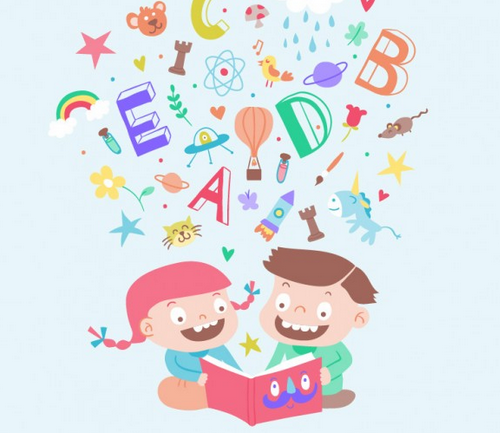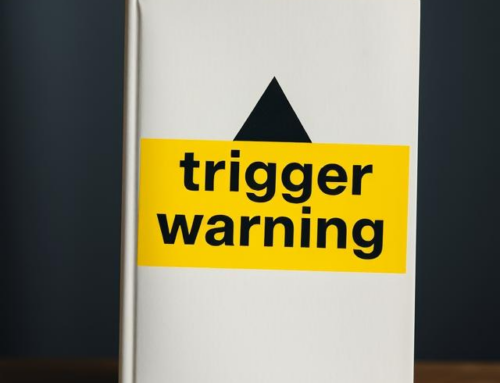 Are you planning to self-publish a children’s ebook? Although it may seem like an easy prospect, there are many pitfalls that have actually seen a glut of unsuitable reading material coming onto the children’s market on Amazon and other book platforms.
Are you planning to self-publish a children’s ebook? Although it may seem like an easy prospect, there are many pitfalls that have actually seen a glut of unsuitable reading material coming onto the children’s market on Amazon and other book platforms.
1. The content is not the right level of readability for the age group you thought your story was for
You may have had kids, or have been a teacher, but unless you are a pedagogical expert on the age group you are trying to write for, you may end up alienating your audience by not acknowledging reading levels for the age group you want to reach. Scholastic has a whole host of information on how they determine reading age groups here.
We can estimate what kinds of age groups might be able to read the book we write in Microsoft Word.
- Click the Microsoft Office Button
, and then click Word Options.
- Click Proofing.
- Make sure Check grammar with spelling is selected.
- Under When correcting grammar in Word, select the Show readability statistics check box.
Microsoft Word gives us the Flesch-Kincaid Grade Level.
This rates text on a U.S. school grade level. For example, a score of 8.0 means that an eighth grader can understand the document. For most documents, aim for a score of approximately 7.0 to 8.0.
There is also a readability calculator here at readability-score.com
2. The story is too young for your age group, while the writing style is too advanced
While the readability calculators may give you an indication of your writing style’s level, it will not assess your content. If a book is too simple with its story and too difficult to read or pay attention, children will find the book boring. And rightly so. The only way to know for sure would be to have your book assessed by a professional editor. You can take a look at writeforkids.org’s list of targeted age range book descriptions here.
3. The illustrations are too old-fashioned for kids today – and parents – to engage with
Ebooks need to pop on a digital screen, and need to be eyecatching enough to draw in a native digital eye. Finding an illustrator who can meet the needs of a modern family reading a book online or on an ereader is a challenge. We love childrensillustrators.com for really wonderful options when choosing an artist for your book.
4. The book contains unsuitable themes for children of your chosen age group
While you may find your monsters, magic or fairy creatures charming, are you sure children will? Often younger children with strong imaginations can find non-human beings invading their dreams, or making them uncomfortable, especially when read at bedtime. It might seem sweet that a well-meaning otherwordly being visits a child in their room each evening, but a little mind might find this a terrifying prospect. Stories that use divorce and loneliness, bullying and children being abandoned by their families can also be incredibly scary for certain kids. My seven-year-old nephew is scared of Adventure Time for example, and that is supposed to be pretty fun with rainbows and unicorns!
5. Your ebook is not the correct genre
When you are marketing your book, are you sure you are picking the correct categories? Remember although your book may be a science fiction story, if it is for 6-year-olds, you need to categorize it in online stores in the children’s section first and foremost, or you’ll likely be showing your book to entirely the wrong demographic.
6. Your book is not formatted correctly for your illustrations and fonts used
One of the biggest turn-offs for parents is trying to read an ebook that is formatted wrong for bedtime reading, or for kids to read alone. Think about how the illustrations and words come together on a screen, and how they will look scaled or turned portrait or landscape. You may find it useful to look into Kindle Comic Creator, which is a new service from Amazon that allows you to create illustrated books from scratch for Kindle.
7. Setting values in your book
If you are older, do you understand how children play, talk, eat and learn? If not, you may not be qualified to write a children’s book set in modern times.
One of the most common errors writers make when writing a kid’s book is not understanding that times change, and values do too, not only across time, but cultures also. Do kids need to be reprimanded in stories? Do your own moral systems have to be forced into the book? Unless you are an expert in child psychology, or a professional in a religious or other type of institution, you shouldn’t convey beliefs through fiction, however well-meaning. Values dissonance is described by TV Tropes here very clearly,
An example of Values Dissonance between the United Kingdom and the US would be the use of blackface imagery, which formed the centrepiece of The BBC‘s Black and White Minstrel Show until the 1970s. Blackface was/is also used in other countries, such as Japan, The BENELUX, and Australia, where it does not have the same cultural stigma…By its nature, this trope is highly controversial. You may well encounter a custom or belief on this page that you don’t think is dissonant at all; you might even be inclined to vehemently defend it. Indeed, concepts of right or wrong or even of what is “proper” are rarely universal in the truest sense of the word. Across all every period of Earth’s history, just about anything has been or can potentially be justified, or at least rationalized.
However, try telling that to a parent who just came across a value that clearly should not be set out in their child’s book.
8. Using tropes that don’t age well
It’s a common error to think of a “traditional” fairytale and rewrite it, or borrow from it. Well, here’s the newsflash: these old-time stories are morally unsound, and pretty hardcore disgusting if you start researching them. They involve kidnap, rape, animal abuse (even of a sexual kind), moral dissonance: heroes that have bad moral systems and do bad things out of greed and anger, child abuse, violence – usually towards the child in the story, slavery, murder, sudden death (usually of a parent leaving the child bereft), poisoning, illness (usually a terrible fever or coma) and curses that cannot be lifted. Unfortunately for the writer wanting to dip into these, books won’t go down well with parents looking for nice books for their beloved ones to read these days. I was smacked with a ruler in class, and my parents lived through World War II. Kids these days have come along from those grim times, and parents treasure their children’s development in different ways.
9. Using elements that have possible implications for the reader
Making your character a stereotypical Chinese neighbor who owns a laundry, an African American jazz musician who lives in the hood, or other tropes can mean that you end up looking like a bigot. Is it really necessary to have the Chinese neighbor run a laundry? Or a black man who basically looks shady? Not at all. Avoid these tropes to write better characters and better books by treating all characters as people regardless of race, gender, etc. But avoid tokenism too: Just because there is one non-white kid in your local school doesn’t mean that’s the same everywhere. Just because moms usually stay at home in your town, doesn’t mean they do everywhere.
10. Writing a kid’s book that is actually for adults
It’s so easy to think that because your story has a kid as the main character it needs to be a book for kids to read. Maybe your book is actually for adults, but happens to have a kid as a main character. To be sure, take a look at your conflicts and the way your story develops. For example, The Goldfinch by Donna Tartt has a kid as the main character, as does her previous book, The Little Friend. These books are definitely written for adults, despite the age of the protagonist.
Get an Editorial Review | Get Amazon Sales & Reviews | Get Edited | Get Beta Readers | Enter the SPR Book Awards | Other Marketing Services


 , and then click Word Options.
, and then click Word Options.



















Leave A Comment